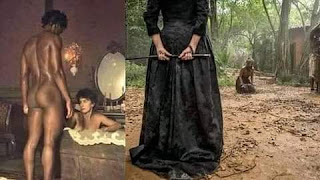Live by the sword, die by the sword: Stunning 130-year-old images of Japanese Samurai warriors for whom honour was more important than their own lives
Live by the sword, die by the sword: Stunning 130-year-old images of Japanese Samurai warriors for whom honour was more important than their own lives
A fascinating set of photographs dating back 130 years show life inside the Japanese Samurai warrior tribes.
They include a display of their tradition of Harakiri, also known as Seppuku. It was used by warriors who wanted to die with honour - either voluntarily or if they had been caught by the enemy.
The ceremonial disembowelment was usually part of a more elaborate ritual and performed in front of spectators. The most startling image shows one warrior soaked in blood with his eyes staring as the sword is plunged into his stomach. The first image of a young Samurai warrior was staged for early cameras.
The Samurai originated in the Heian period dating back to 710 and in particular campaigns to subdue the native Emirishi in the Tohuku region of the northern part of Honshu.
Over the centuries they became more and more powerful and eventually became the 'warrior nobility' of Japan, making up the ruling class from about the 12th to the 19th century.
The Samurai followed a set of Confucian influenced rules that came to be known as bushido - literally 'the way of the warrior'.
The unwritten and unspoken code emphasised frugality, loyalty, martial arts mastery, and honor unto death.
But the code also evolved to stress heroic bravery, fierce family pride, and selfless, at times senseless devotion of master and man.
During the 15th and 16th centuries there were many warring factions, but later wars reduced in number.
The fearsome warriors wore plate armour and a vast array of weapons including the bow and arrow, spears, guns, and of course, the Samurai sword.
But as peace seemed to endure during the Edo period, many became teachers, artists or bureaucrats as the need for martial skills became less important.
And when Emperor Meiji came to power in 1868 he began to abolish the Samurai's powers.
Firstly, he stripped their right to be the only armed force in Japan and began to introduce a western style conscripted army from 1873.
The Samurai became the shizoku, merging with another social class under Meiji reforms and the right to wear a katana (sword) was lost along with the power to execute anyone who disrespected them in public.
The name shizoku continued to be a part of Japanese culture until the end of World War Two but was outlawed in 1947.
Despite the Samurai making up no more than 10 per cent of the Japanese population at its height, its influence is still heavily seen in Japanese culture, in particular modern martial arts.




Comments
Post a Comment